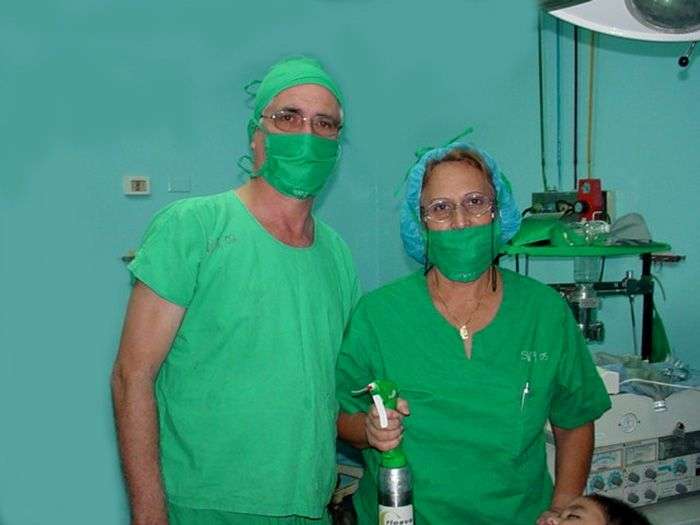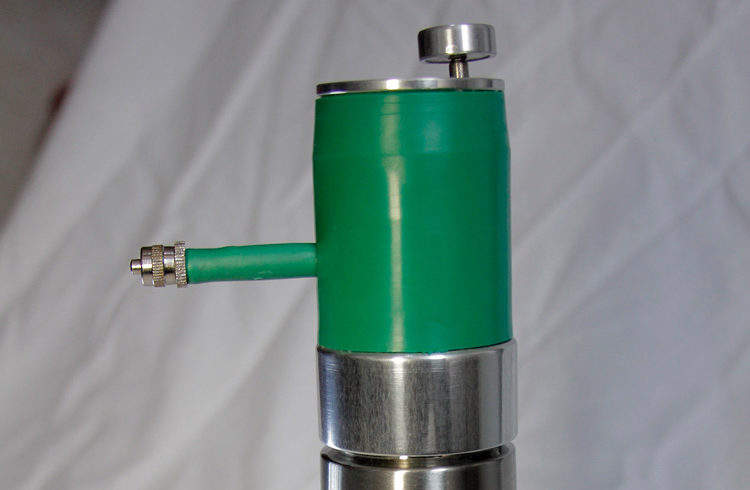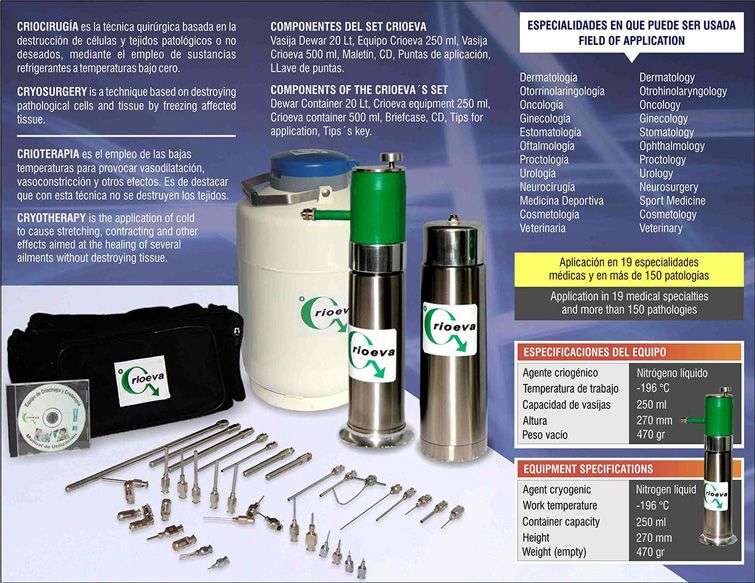An inexpensive, effective procedure valid for more than 150 pathologies and 19 specialties, capable of saving millions of dollars with the substitution of traditional surgical procedures, could be the result for Cuba of a Cryosurgery and Cryotherapy Project that is expected to start in 2017.
However, its startup will depend on obtaining the necessary financing to produce on a large scale the CRIOEVA equipment, created and perfected by Engineer Elio Villarreal Acevedo, a specialist with more than 30 years of experience. Liquid nitrogen is applied with this equipment at temperatures of -195 degrees for the treatment of different diseases.
According to a documented study with statistics from the Hermanos Ameijeiras Clinical Surgical Hospital – where the equipment created by Elio has been used for more than two decades – the results in the economic sphere would be extraordinary. The planned saving with its generalization in 84 of the island’s general and clinical surgical hospitals and in just three pathologies of the otolaryngology specialty would be more than 14 million CUC a year. These figures increase with the expansion of specialties and hospital institutions where it could be used.
“There is no nation in the world with a thought-out application at these levels. In addition, we already have sufficient trained personnel in these three decades. This technology is ideal for poor countries and for those with a social vision of medicine, as Cuba is,” affirms Villarreal, who is the author and adviser of the CRIOEVA Global Project for the Development of Cryosurgery and Cryotherapy in Cuba.
To explain the project’s sense it is pertinent to say that Cryosurgery is the surgical technique based on the controlled destruction of pathological cells and tissues through the action of freezing elements at below zero temperatures on affected tissues. Meanwhile, the Cryotherapy consists in the application of cold temperatures for therapeutic purposes to provoke a wide-ranging spectrum of effects like analgesic, dilation, contraction and others, for the curing of certain sufferings.
For Elio the story dates back to 30 years ago, when very little was known about this subject on the island. The introduction of these techniques in Cuba is due to a great extent to his personal will. He knocked down doors, visited hospitals throughout the country, gave courses, lectures, workshops and interviews; spread all the information that fell into his hands. This experience led him to write a book titled Criogenia, Criocirugía y Crioterapia and to thus increase the popularity of these procedures, which could be the island’s medicine’s next novelty.
Dr. Marta Ortega Lamas is among the doctors who have used the techniques promoted by Villarreal. A second degree specialist in otolaryngology, consulting professor and with a Master’s in Sciences, she works in the Hermanos Ameijeiras Hospital with one of the equipment produced by the engineer. For the results of this technology in her specialty she recently won the Annual Prize of Greatest Economic and Social Impact granted by the National Association of Innovators and Rationalizers.
“The advantages are innumerable,” Ortega Lamas affirms. “It is an out-patient procedure, with no bleeding or complications. When patients get up from the chair they can carry out all their usual activities, because they only feel a slight discomfort, but it does not require a medical certificate.”

Other benefits of the Cryosurgery and Cryotherapy are that anesthesia is not required in the majority of the applications, a reduction of post-operative pain, excellent cicatrization, in addition to a proven immunological effect.
Its use facilitates operating on patients with coagulation problems and persons who because of their profession do not admit classical surgery, like tonsillectomy in singers. To this is added its safe use in senior citizens, obese persons suffering from hypertension, persons suffering from heart problems, diabetics, post-infarcted persons, cirrhosis patients or with a great liver insufficiency, high-risk surgery patients or with very low defenses, patients with pacemakers, with kidney problems and those who because of different reasons cannot be submitted to general anesthesia.
Together with its medical virtues, the economic feasibility also stands out. Dr. Ortega Lamas explains that a liter of liquid nitrogen costs barely 40 centavos of a CUP on the island and with it she operates between 15 and 30 patients.
“It is so inexpensive because it is a byproduct from obtaining oxygen, which must be obtained anyway, with the small cost of storage. Very little is used, and the rest that is not possible to store is expelled to the atmosphere,” Elio confirms.
Cryosurgery has opened new possibilities for medicine worldwide. Its use has spread to many specialties, beyond those like dermatology, gynecology in which it was initially used. However, those who prefer it have had to face years of lack of knowledge and prejudices.
According to Elio, the commercial aspect of medicine that prevails in the world is a barrier for the systematization of this procedure. “On what does a hospital live in the capitalist economy? From examining patients, having tests and checkups made, hospitalizing them, taking them to the operation room, and afterwards continuing with their hospitalization. With this technique all this is eliminated and they cannot charge so much for a simple treatment,” affirms the specialist, an active member of the Iberian-American College of Cryosurgery.
However, he has received signs of interest from several Latin American countries, which confirms his theory on the perspectives of this procedure for the region.
A company was created in Ecuador for the production of CRIOEVA, thanks to which several equipment are manufactured. Some of them are distributed to the island’s hospitals, but the death of the investment partner stopped production.
“The project has been approved by the Ministry of Public Health to start in January 2017,” Elio commented on the current situation, “but we are seeking financing. We already have thought of a system for the training of the medical personnel. It would function as a domino effect. We would train the specialists from other provinces in Havana, and these would do so afterwards in their territories.
“If we could get the money for the investment, in a month we could have some 60 equipment, but in Ecuador, which is where the raw material is located and the technology is assembled. It is not possible at this time to obtain it in Cuba with the required quality, although it could be feasible in the future,” affirms the engineer, who has discussed the logistics issue with several national enterprises.
Outside of Havana, many are waiting for the equipment. Dr. Fidel Castro Pérez, a second degree specialist in otolaryngology, is one of the interested specialists. A doctor in the hospital of the Sandino municipality, Pinar del Río, he recalls when he received training on Cryosurgery more than 10 years ago. The lack of equipment then stopped his wishes to apply what he had learned.
“Undoubtedly it is a very effective technique,” he affirms. “Let’s hope that one day I can have the equipment to use it in my hospital.” The generalization of CRIOEVA would be the answer to his aspiration.











